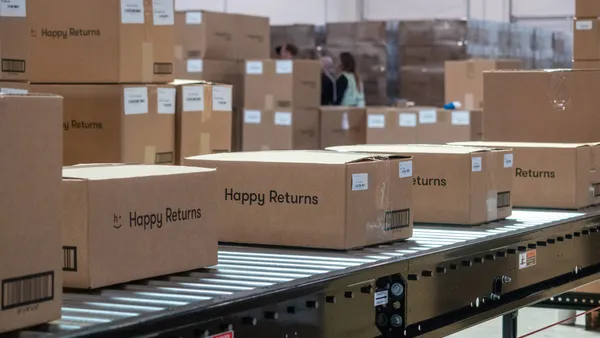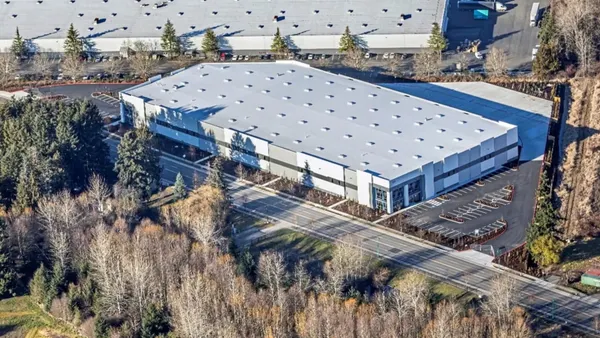To thrive in today’s global business environment, companies must be both fast-paced and customer-centric. Operations must run smoothly to remain competitive. With that in mind, real-time inventory visibility is no longer a luxury but a necessity. In fact, it's the backbone of efficient operations, customer satisfaction and bottom-line growth.
With real-time inventory visibility – which 45% of supply chain executives called a “significant issue” according to a recent survey from Standvast Fulfillment and Supply Chain Dive’s studioID – companies realize benefits such as:
- Increased customer satisfaction
- Optimized inventory management
- Faster fulfillment times
- Better targeted, more accurate demand forecasts
- Cost reductions in the face of rising input prices
- Anti-fragile supply chains that stand the test of time
These are just some of the key wins that organizations can expect from real-time inventory visibility. In the same survey, Standvast learned that the majority of companies are being asked to deliver orders faster and that offering fast delivery options is a critical factor in those companies’ revenue and customer growth strategies.
Put simply, your customers want to know where their orders are at any point in the supply chain — a capability that large e-tailers like Amazon have mastered, but many sellers are still working towards. In fact, just under half (45%) of companies cite maintaining real-time inventory visibility across different channels as their top roadblock when coordinating that inventory (e.g., e-commerce storefronts, marketplaces, brick-and-mortar locations, etc.).
Here are four more reasons why your company should have real-time inventory visibility in its corner:
- Minimize order-splitting. When half of an order ships from one warehouse and the other half ships from another location, the fulfillment costs for that order may double or more. This situation can be avoided by using real-time inventory visibility to ensure that inventory data is clean and reliable. “That way, you’re not making splits that you really shouldn’t be making in the first place,” says John Appert, chief supply chain officer at Standvast Fulfillment, a provider of fulfillment and supply chain technology services.
- Eliminate out-of-zone shipping. Real-time inventory visibility also reduces the need for out-of-zone shipments, which cut into the profits on every order that has to be shipped from a warehouse or DC outside of a designated delivery area. The further a package travels from its point of origin, the more the cost of shipping it continues to climb. Updated, accurate data on inventory levels and locations helps companies make informed decisions about where to fulfill orders so they always ship from the nearest fulfillment center.
- Make excess safety stock a thing of the past. Inventory is expensive, but being caught out-of-stock on a product means a lost sale and the risk of losing customers. Rather than risk it, companies will fortify their safety stock levels and hope for the best. This usually happens because companies don’t have a reliable view of their inventory.
“They’re either holding goods in reserve because they’re afraid of overselling or not holding enough because they don’t want to get stuck with too much safety stock,” says Standvast Fulfillment CEO Cayce Roy. With real-time inventory visibility, organizations can improve demand forecasting to anticipate future needs better and avoid costly stockouts, safety stock and overstocks. - Give procurement a game-changing solution. Managing inventory levels is a full-time job for most procurement departments, but real-time inventory visibility tools empower them to make more informed decisions when purchasing goods and managing inventory. These tools also help strengthen supplier relationships and facilitate more effective collaboration to ensure a more reliable, efficient supply chain.
“When you order the right quantity of goods and place it where it needs to be,” says Appert, “the ‘cleaner’ your inventory picture and decisions will be.” As an added bonus, when they don’t have to spend all of their time tracking down inventory and ensuring data accuracy, procurement and supply chain teams are free to work on more strategic, value-added projects.
Enlisting the Help of Logistics Service Providers
Other pressing inventory challenges companies face right now include managing stockouts or overstocks (38%), predicting accurate demand fluctuations by channel (38%) and obtaining a single, accurate view of inventory levels across those channels (30%). For help, the majority of organizations Standvast Fulfillment surveyed (88%) have either already turned to a logistics service provider (LSP) or plan to do so in the near future.
Using robust inventory visibility solutions, logistics service providers (LSPs) can offer accurate inventory-related data from across the end-to-end supply chain, which can be used to develop more precise forecasts, place products where they need to be and minimize both stockouts and overstocking. For example, because Standvast serves a broad spectrum of customers, it can also leverage its collective data and make more accurate recommendations based on peak demand, specific units or assortments and certain markets.
This means shippers always know where inventory is and can select the optimal mode for moving it. For instance, Standvast provides accurate bin-level inventory data via a customer portal, which is updated as items are scanned, stored and shipped. This allows the LSP to deliver a “Prime-like” service, which effectively democratizes a granular level of inventory accuracy in a portal that can be accessed by a brand, regardless of whether it has $5 million or $500 million in annual sales.
See It, Know It, Own It
No matter how close to the end customer you place inventory or how creative your final-mile delivery strategies are, if your inventory picture is inaccurate, you’re going to end up with split shipments, excessive safety stock, out-of-zone shipments and other costly fulfillment errors.
“Your cost structure will start to increase pretty drastically and quickly,” Appert cautions. “There’s a significant, per-unit fixed cost associated with every package you ship, and if you’re operating at scale, those expenses can throw your cost structure upside down.”
With the majority of companies (93%) Standvast surveyed also grappling with higher costs associated with selling via marketplaces online, the business case for real-time inventory visibility becomes that much stronger. By providing reliable, updated pictures of inventory levels and locations, this visibility helps companies optimize inventory management, minimize overstocks/stockouts, reduce excess inventory holding costs, and keep their customers happy.
To view the full report of the survey data referenced in this article, please download our research report.










